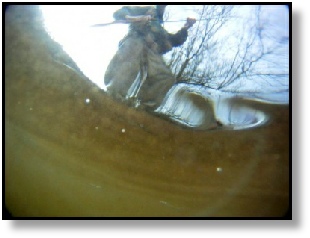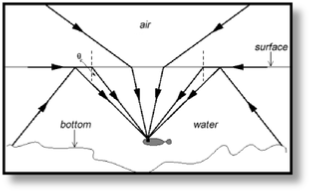Bank fishing includes both still water and river/stream fishing and we'll look at
each in turn. These different types of venue present their own individual challenges
but the problem is always the same, whether fishing a still water or river - where
to find the fish. We are constrained on the banks of a lake or reservoir by how far
we can cast. On a river or stream casting distance may not be such a problem if the
water is not too wide but the task is actually made more complex by this small size
- how do you locate the fish without being detected yourself.
So the obvious next question is . . . where is the fish's food most likely to be?
We know that trout are omnivorous, feeding on bugs, nymphs, larvae, fry and virtually
anything else that moves. There must be plenty of vegetation for these creatures
to feed on or hide in. And now we are looking for the littoral zone - that area of
the lake or reservoir at the edges that will support the vast majority of the flora
and fauna in the water. The littoral zone will not be spread evenly around the edge
of the water. Some areas will be more fertile than others. The shallowest areas will
become too warm in summer to support animal life even though it is full of vegetation.
Other areas will slope too rapidly to the depths to allow vegetation to grow. Consider
also the fish's need to have a route of escape should danger threaten. We are now
confining ourselves to certain areas that are more likely to contain our prey. The
ideal spot will be within casting range, the edge of the vegetation and eight to
ten feet deep and with a drop off to deeper water. This is the depth where insufficient
light permeates the water to allow vegetation to grow and the fish will patrol this
edge looking for food among the plant life.

















